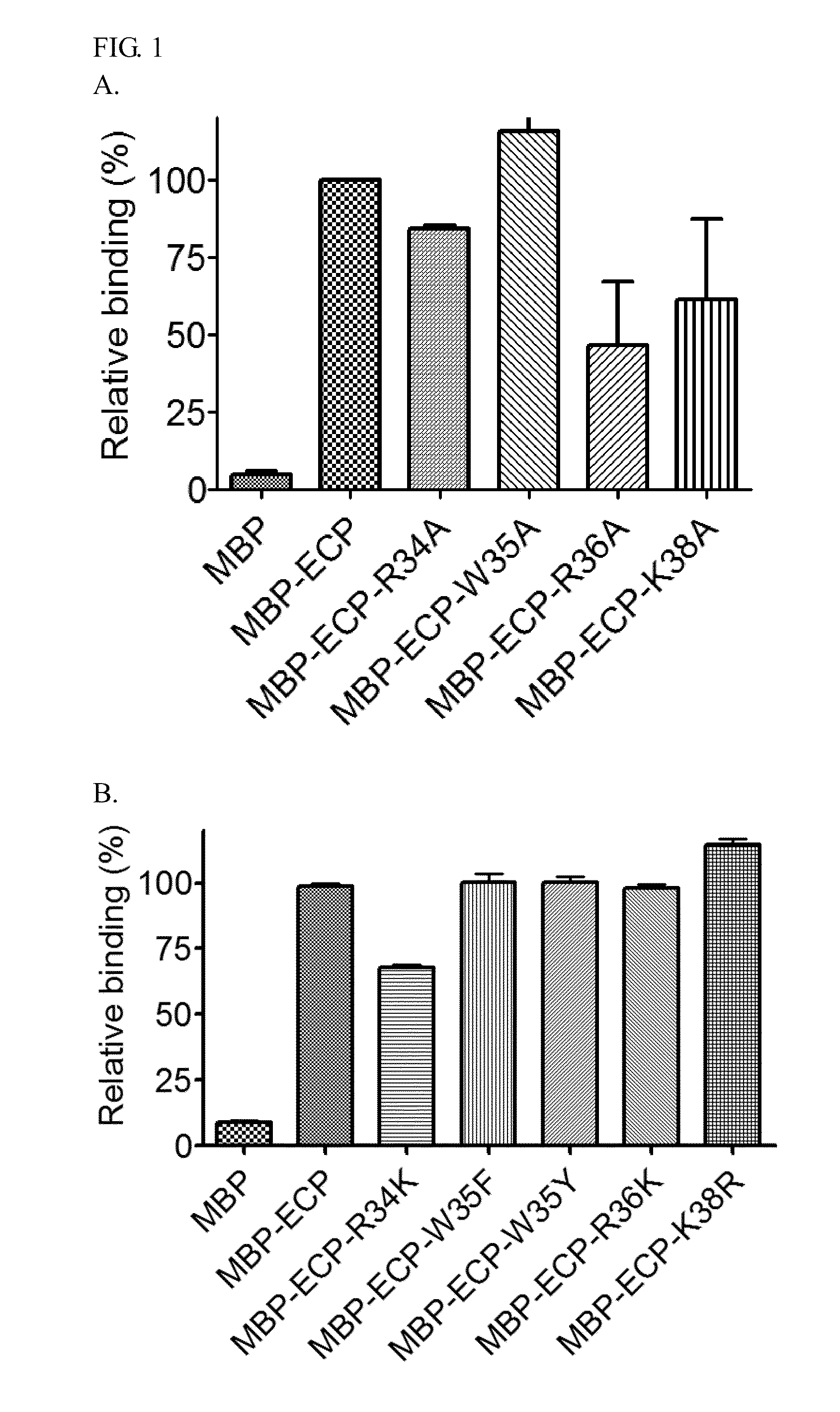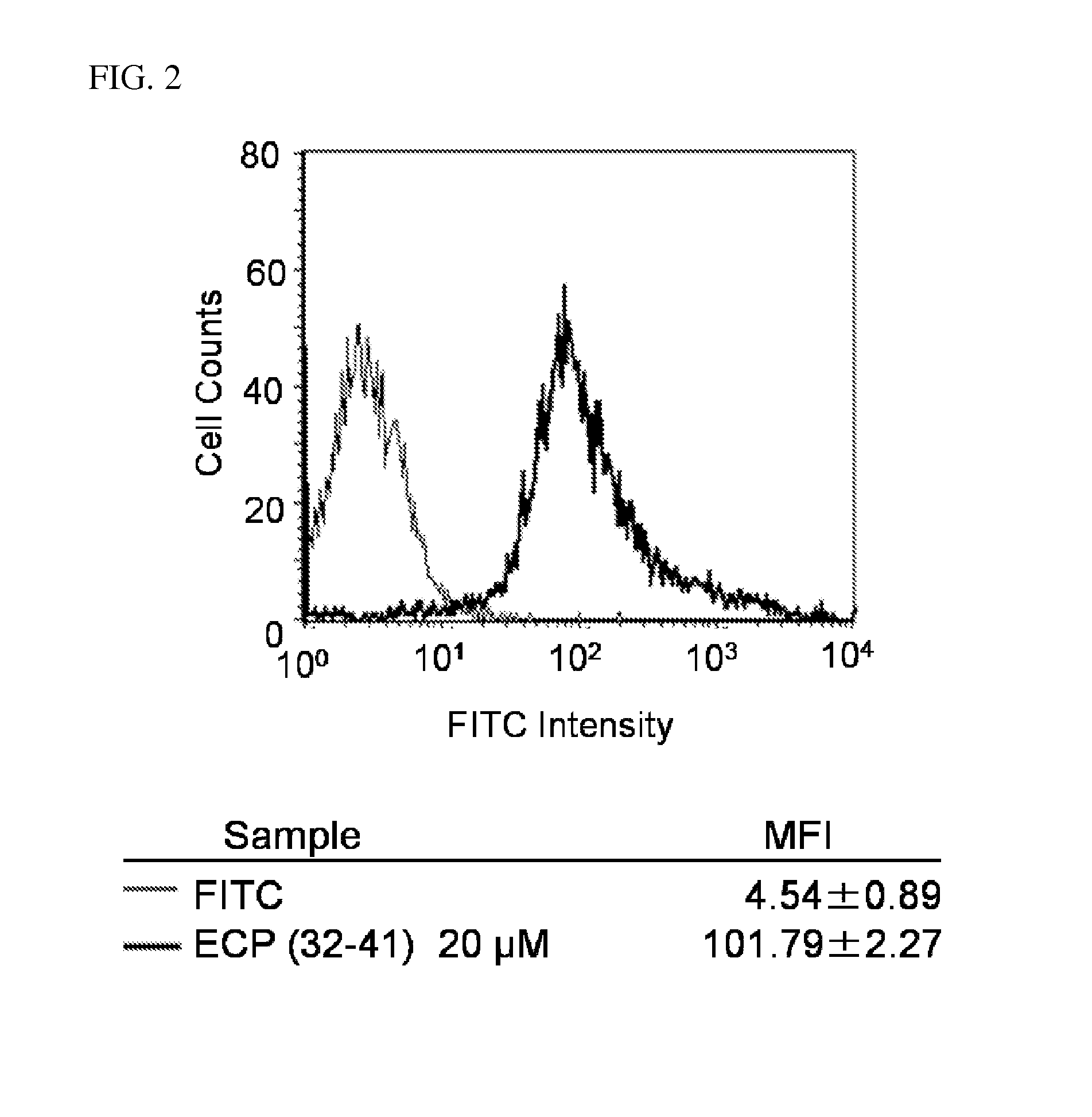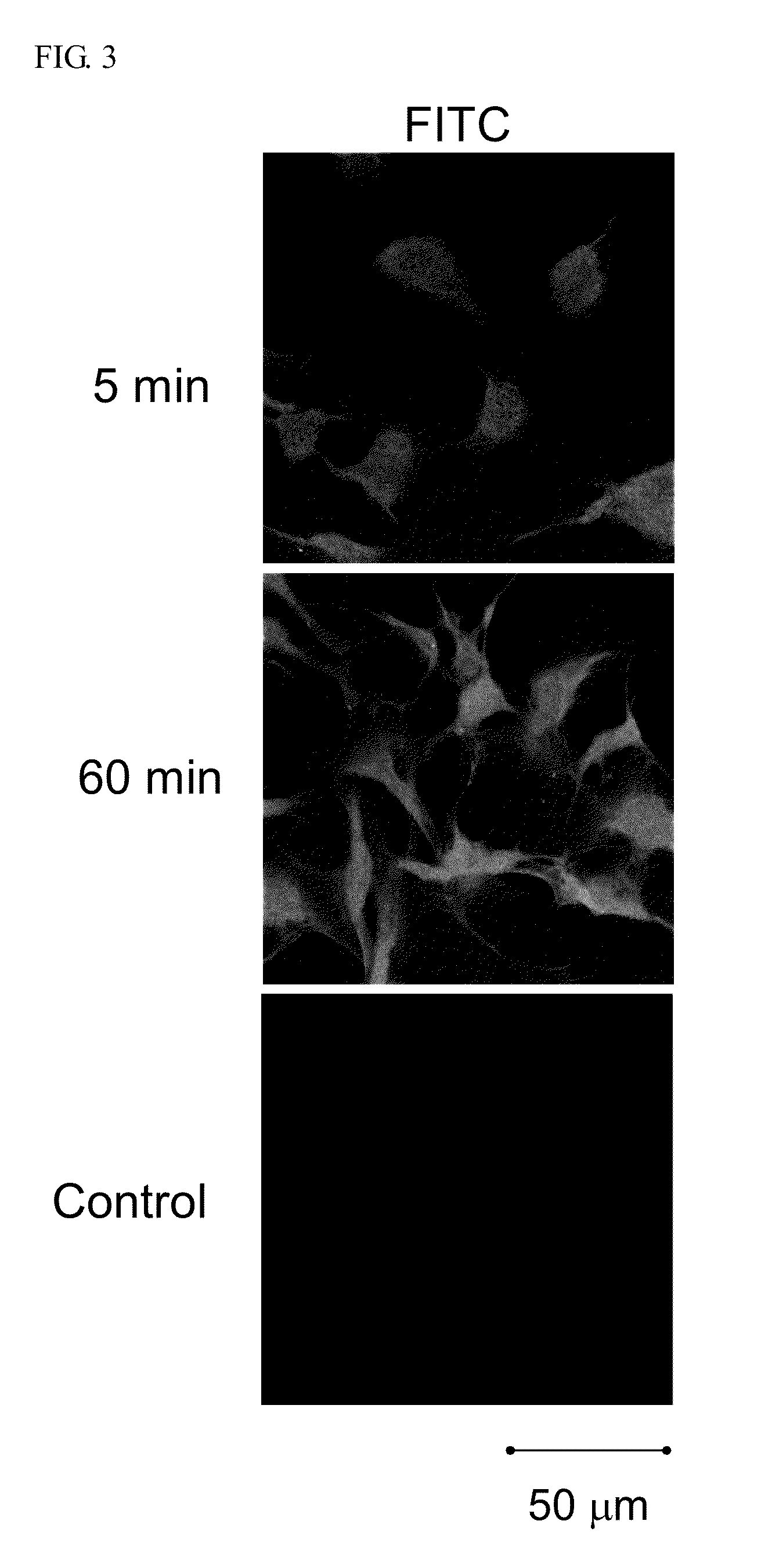Cell penetrating peptides for intracellular delivery
a cell-penetration and intracellular technology, applied in the direction of peptide/protein ingredients, peptide sources, therapy, etc., can solve the problem that the internalization of large hydrophilic therapeutic agents such as proteins or nucleic acids is still a challenging task
- Summary
- Abstract
- Description
- Claims
- Application Information
AI Technical Summary
Benefits of technology
Problems solved by technology
Method used
Image
Examples
example 1
Identification of Specific Heparin Binding Residues in ECP(32-41)
Cell Culture
[0024]Beas-2B cells were cultured in RPMI 1640 medium (Gibco, Invitrogen, USA) supplemented with heat-inactivated 10% (v / v) fetal bovine serum (FBS) (Gibco, Invitrogen, USA), and 1% (v / v) Glutamine-Penicillin-Streptomycin (biosera). Cells were grown on 100-mm dishes and incubated at 37° C. under 5% CO2.
Protein Expression and Purification
[0025]For cell-binding assays, pMAL-c2G expression and purification system (New England Biolabs) was chosen for recombinant ECP fused with N-terminal maltose binding protein (MBP) between the EcoRI and XbaI site and expressed in soluble form in E. coli. Amino acid residues R34, W35, R36, and K38 of ECP were individually substituted with other amino acids using QuickChange site-directed mutagenesis (Stratagene) with primer pairs, 5′-GCAATTAACAATTATGCATGGCGTTGCAAAAACC-3′ (SEQ ID NO: 8) / 5′-GGTTTTTGCAA CGCCATGCATAATTGTTAATTGC-3′ (SEQ ID NO: 9) (R34A), 5′-GCAATTAACAATTATAAATGGCGT...
example 2
Cell Penetration of ECP (32-41)
[0028]Cells (2.0×105 cells / well) were plated into a 6-well microplate and cultured for 24 h in RPMI 1640 medium containing 10% heat-inactivated bovine serum (Beas-2B). After complete adhesion, the cells were incubated at 37° C. with fluorescence-labeled peptides dissolved in fresh serum-containing medium prior to washing with PBS. The cells were then treated with 0.25% trypsin at 37° C. for 10 min prior to addition of PBS, and centrifuged at 300×g for 5 min at 4° C. The supernatant was removed and the cells were washed with PBS and centrifuged at 300×g for 5 min at 4° C. The washing cycle was repeated again and the cells were suspended in PBS and subjected to fluorescence analysis on a FACScalibur (BD Biosciences, Franklin Lakes, N.J.) flow cytometer (FACS) using 488-nm laser excitation and a 515-545-nm emission filter.
[0029]Flow cytometric analysis was used to quantify cellular association of fluorochrome-tagged peptide, FITC-ECP(32-41) ...
example 3
Intracellular Distribution of ECP(32-41)
[0030]Cells (1.0×104 cells / well) were plated on 18-mm glass-bottomed dishes (Marienfeld, Germany) and cultured in medium containing 10% heat-inactivated fetal bovine serum for 24 h. After complete adhesion, the cell culture medium was removed, and then incubated at 37° C. in fresh medium containing the fluorescence-labeled peptides. The cells were washed with PBS, then fixed by 2% (w / v) paraformaldehyde (PFA) in PBS for 15 min, and 50 mM ammonium chloride in PBS was added to quench with fluoresce from PFA. Distribution of the fluorescence-labeled peptides in the cells was analyzed using a confocal scanning laser microscope (Zeiss).
[0031]The intracellular localization of the FITC-ECP(32-41) in Beas-2B cells was investigated by confocal microscopy. Upon treatment with 5 μM FITC-ECP (32-41) for 5 min, a clear fluorescence signal inside the cells was observed, indicating that the ECP(32-41) entered the cells efficiently. Stronge...
PUM
| Property | Measurement | Unit |
|---|---|---|
| temperature | aaaaa | aaaaa |
| concentration | aaaaa | aaaaa |
| hydrophilic | aaaaa | aaaaa |
Abstract
Description
Claims
Application Information
 Login to View More
Login to View More - R&D
- Intellectual Property
- Life Sciences
- Materials
- Tech Scout
- Unparalleled Data Quality
- Higher Quality Content
- 60% Fewer Hallucinations
Browse by: Latest US Patents, China's latest patents, Technical Efficacy Thesaurus, Application Domain, Technology Topic, Popular Technical Reports.
© 2025 PatSnap. All rights reserved.Legal|Privacy policy|Modern Slavery Act Transparency Statement|Sitemap|About US| Contact US: help@patsnap.com



